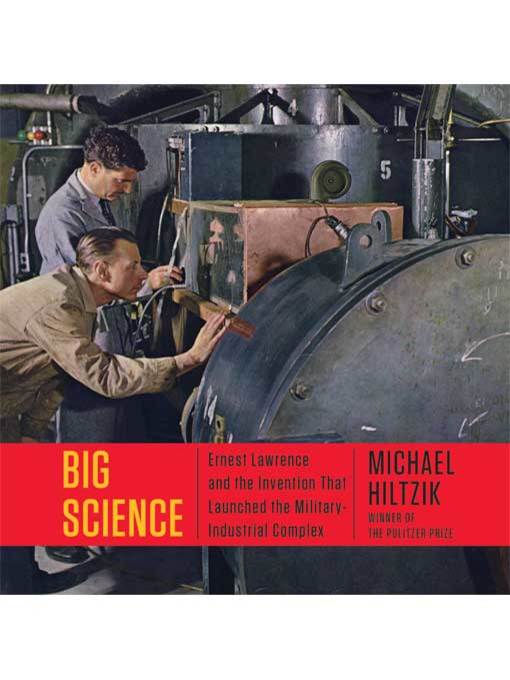
Big Science
Ernest Lawrence and the Invention that Launched the Military-Industrial Complex
کتاب های مرتبط
- اطلاعات
- نقد و بررسی
- دیدگاه کاربران
نقد و بررسی

Hiltzik's sweeping exploration of the twentieth century's development of industrialized science and its impact on the military is a fascinating lens through which to understand the modern world. Sadly, narrator Bob Souer is not the right choice to bring this history to life. Though his timbre is engaging--deep, with a light rasp--his voice lacks a strong emotional resonance, making much of the narration come across as flat. He can at times provide energy and excitement, but those time are far and few compared to the passages that lack vocal affect. This quality can be particularly challenging for listeners during the complicated technical passages throughout the production. L.E. © AudioFile 2015, Portland, Maine

May 4, 2015
Ernest Lawrence may have been overlooked by history in favor of contemporaries like Einstein, Oppenheimer, and Fermi, but his impact on modern science is undeniable. In this dual history of Lawrence and the movement he single-handedly brought into being, Hiltzik (The New Deal), a business columnist at the Los Angeles Times, explains how Lawrence’s postwar research exceeded the budgets of universities and philanthropic foundations, necessitating government patronage. Lawrence’s first cyclotron, a device intended to energize subatomic protons in order to allow them to penetrate the nuclei of atoms, was a breakthrough for nuclear physics and also changed the way science was performed. In order to understand ever-smaller subatomic particles, Lawrence was ironically pressed to build increasingly larger and more expensive apparatus. His machines won him a Nobel Prize in 1939 and also helped the Allies win WWII: Lawrence’s Radiation Lab in Berkeley, Calif., provided much of the staff and materials used to develop the atomic bomb. Hiltzik demonstrates profound ambivalence about the consequences of the rise of the military-industrial complex—both its expense and its complicity in the nuclear arms race are problematic—but his portrait of Lawrence, who gave birth to the modern research lab through sheer force of will, is powerful nonetheless. Photos.

October 15, 2015
Hiltzik (The New Deal) presents a solid biohistory of Ernest Orlando Lawrence (1901-58), whose famous 1932 invention, the cyclotron, revolutionized scientific understanding of the fundamentals of nuclear physics. Lawrence won the 1939 Nobel Prize in physics for inventing the first particle accelerator capable of achieving high energies. The author reveals how his subject played the key role in solving for the Manhattan Project the problem of uranium-isotope separation. Hiltzik's dense analysis reveals fascinating details of Lawrence's legacy in nuclear research and provides an important explanation of how the physicist strongly influenced the beginnings nearly 90 years ago of the intricate world of government-supported science laboratories now known as the "military-industrial complex." Narrator Bob Souer's steady-paced reading nicely complements this complex story. The work would be a useful supplement to Richard Rhodes's classics Making of the Atomic Bomb and Dark Sun: The Making of the Hydrogen Bomb. As Hiltzik makes clear, without Lawrence's cyclotron, the nuclear age would never have begun. VERDICT This work's heavy emphasis on historical detail and accuracy makes it a sure bet for anyone interested in nuclear physics or the history of science.--Dale Farris, Groves, TX
Copyright 2015 Library Journal, LLC Used with permission.

























دیدگاه کاربران